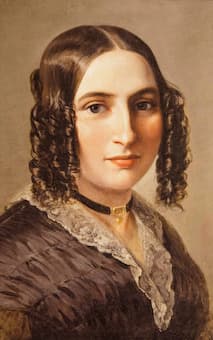
Are you and your students playing only the “core canon” by dead, white male composers?
© Media Diversified
When I was having piano lessons as a child and teenager from the early 1970s to the mid-1980s I never played any piano music by women composers, except perhaps some very rudimentary pieces by the late Fanny Waterman (though I cannot actually recall any). I rarely played any contemporary music and I certainly never played music by BAME (Black, Asian, and minority ethnic) composers. Instead, I learnt music from the “core canon” – pieces by Bach, Haydn, Mozart, Beethoven, Chopin, Mendelssohn and Debussy – all written by dead, white male composers.
And when I was studying music at school I never, if my memory serves me correctly, encountered any BAME or women composers or their works, except Fanny Mendelssohn, briefly, and only in the context of her brother Felix. I never questioned it at the time; I practiced the piano music I was assigned by my teacher, and studied the scores of the set pieces for O- and A-Level Music (both works by Beethoven).
Fanny Mendelssohn-Hensel: 6 Melodies, Op. 4-6 melodies, Op. 5 – No. 4 Lento appassionato (Sontraud Speidel, piano)

Fanny Mendelssohn
In recent years, the narrowness of music syllabuses has, fortunately, been challenged and today school music courses and graded music exam repertoire lists reflect the more enlightened, diverse and equal times we now live in. In their latest graded piano exam syllabuses, the three major UK music exam boards – the ABRSM, Trinity College London (TCL) and London College of Music (LCM) – have gone to considerable lengths to include music by women, BAME and contemporary composers.
In my teaching – and indeed in my own playing – I have always sought a broader range of repertoire. Too often, students of all ages approach classical music with the misconception that it was all written by dead white men in periwigs, and, as a teacher, I believe one has a responsibility to encourage students to explore the wider shores of the repertoire, thus debunking that tired old trope. And music exam boards also have a responsibility to offer a broad range of music, reflecting the diversity of the pianist’s repertoire – and the diversity of those who wrote, and write, for the instrument.
There’s no excuse for not offering students, and audiences too, the opportunity to explore a wider repertoire. The easy and often free availability of music online, via platforms like YouTube and Spotify, means more classical music than ever is available to hear. The difficulty for students is perhaps the overwhelming amount of music and the lack of a “way in” to it. Thus, exam syllabuses can provide a gateway to explore new or different repertoire.
There is of course a danger that, when seeking greater diversity and equality in exam syllabuses, and also concert programmes, the inclusion of music by female or BAME composers leads to tokenism, and so for this reason, I believe that, ultimately, music should be included on the basis of its quality, regardless of who composed it.
For more of the best in classical music, sign up to our E-Newsletter
Cheryl Frances-Hoad: Lyric Piece: Contemplation (Ivana Gavrić, work)



